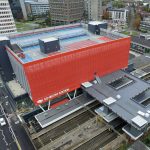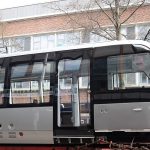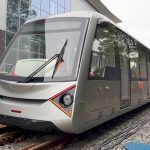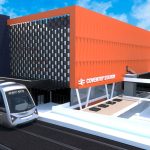By: David Holmes
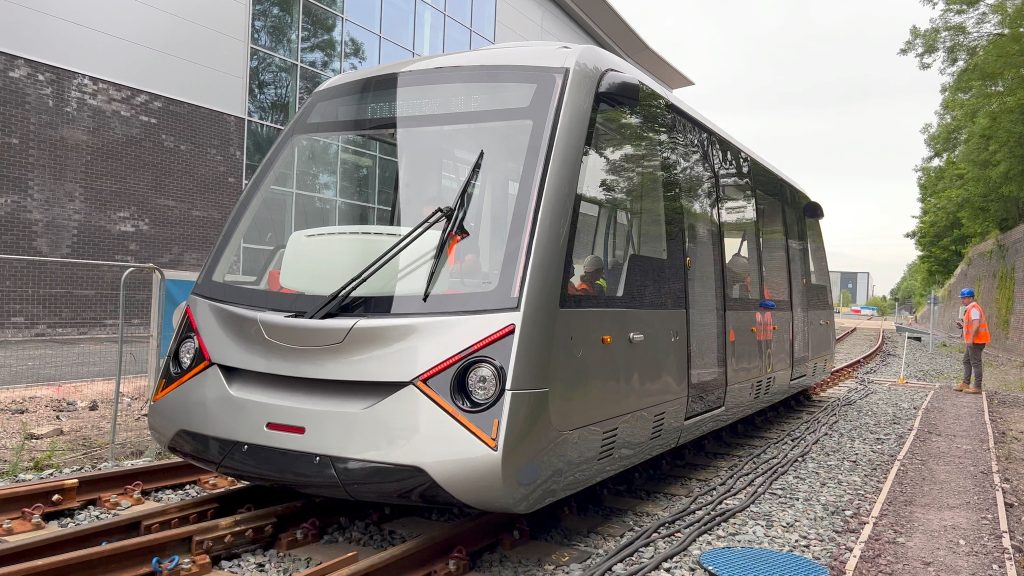 The future of rail is, based on new investments and continuous developments in the sector, still bright, especially if the pilot projects like the “very light rail” in Coventry will demonstrate success and deliver the expected promising results supported by its promoters. This system will include a new trackbed design and autonomous vehicles with an onboard power supply that is already being tested. Construction plans of the Coventry Very Light Rail are ongoing, and approaching the final steps after the West Midlands Combined Authority Board gave the green light for the project’s first GBP 35 million (EUR 39.6 million) installment in January, a part of a GBP 72 million (EUR 81.6 million) investment in the development of very light rail technology through the Department of Transport’s City Region Sustainable Transport Settlement. If these trials are going to satisfy all the stakeholders and they prove to be rewarding for society and the business sector, the same strategy can be used for many smaller cities across the UK.
The future of rail is, based on new investments and continuous developments in the sector, still bright, especially if the pilot projects like the “very light rail” in Coventry will demonstrate success and deliver the expected promising results supported by its promoters. This system will include a new trackbed design and autonomous vehicles with an onboard power supply that is already being tested. Construction plans of the Coventry Very Light Rail are ongoing, and approaching the final steps after the West Midlands Combined Authority Board gave the green light for the project’s first GBP 35 million (EUR 39.6 million) installment in January, a part of a GBP 72 million (EUR 81.6 million) investment in the development of very light rail technology through the Department of Transport’s City Region Sustainable Transport Settlement. If these trials are going to satisfy all the stakeholders and they prove to be rewarding for society and the business sector, the same strategy can be used for many smaller cities across the UK.
Funded by the West Midlands Combined Authority, the Coventry and Warwickshire Local Enterprise Partnership and Coventry City Council. “The key aim of a very light rail system is to reduce the cost of implementation and operation, rather than necessarily the weight or size of the system,”Nicola Small, the CVLR programmer manager, said. Plans for a better connection in urban areas might start with pilot projects like this, Nicola Small admitting that traditional light rail systems are too expensive to build and operate, with a capacity of 200 persons, the demand in small cities is not the same. Statistics show that Coventry, with a population of 365.000, can benefit further from this project by connecting suburbs with key corridors helping this to become a permanent infrastructure transport network and creating a social transportation hub in the city centre. Like everywhere else in the world right now, when it comes to problems with congestion and air pollution in medium or large cities, the United Kingdom is no exception. The gap in the United Kingdom market right now is between the light rail and bus services that must be affordable and attractive for the modal shift type.
Cutting costs these days have become a priority, especially when it comes to new investments, and barriers like inflation and the energy crisis are a reason why governments try to find simple and innovative solutions that are easy to access for everyone. All these prospects wouldn’t be possible without advanced technologies and social demand, resulting in redesigning some elements while eliminating others, the CVLR team believes it can “cut costs for such a system to around a third of the average of GBP 30 million/km”. Pointing out that combined services of transportation would complement rather than go against each other, providing a long-term integrated solution for dynamic cities, quoting Nicola Small: “In 2025 we will be the first all-electric-bus city in the UK” giving Nottingham city’s example who invested in buses at the same time as delivering a tram network, the tram has achieved modal shift while the bus patronage has gone up.
The CVLR developing team keeps the focus on several cost-saving elements, according to Warwick University Warwick Manufacturing Group principal engineer Christopher Micallef, who declared that making the system physically lighter or smaller was not the principal concern but eliminating or redesigning items where the biggest savings could be made was the main priority, such as catenary, track installation and driver-operated vehicles. Micallef stated that the CVLR system with smaller, driverless vehicles and onboard power can lead the way and the market will naturally go in that direction once these technologies become more accessible worldwide. The new trackbed design, which has a depth of less than 300mm compared to the conventional trackbed depth of 500mm or higher, is expected to enter testing in Whitley, a suburb of Coventry, in the next coming weeks. With nothing available on the market for this particular CVLR trackbed, the team developed a new specification for it which exploits recent developments in materials technology such as ultra-high-performance concrete, eliminating the need for a concrete base layer and reducing installation costs and the potential impact on utilities along the route. With a trackbed in the testing phase, Micallef’s team is ambitious that it can support heavier rail vehicles than anticipated, which can also have significant implications for other rail systems.
The new CVLR trackbed can be revolutionary if it proves that it can support heavier vehicles, Nicola Small says. “If it can, this will be game-changing in the industry”. This research was secured by the Transport for West Midlands, and the results could help operators unable to secure funding for their extensions by accessing this cheaper delivery option.
At the Very Light Rail Innovation Centre in Dudley, a prototype is being tested, the first of its kind, in the development of this vehicle the CVLR team was also involved, rising the expectation of their ambitious project. “Apart from being much smaller than a traditional vehicle – it is fully battery operated so there is no need for overhead catenaries – and it has a novel bogie that enables it to go round much tighter corners,” Small said. The CVLR was formed to be a research and development programme team, which means they are bound to challenges, expecting the ultimate test to be the construction and operation of a full-size demonstrator that is planned to be built on Coventry streets without carrying passengers but to simply test and display the construction and operation of the system in a real-life environment.
The nature of existing infrastructure, in places like Manchester, will not allow these types of projects to be implemented but it is clear to see the benefits of such system for a place like Coventry.
Share on:



